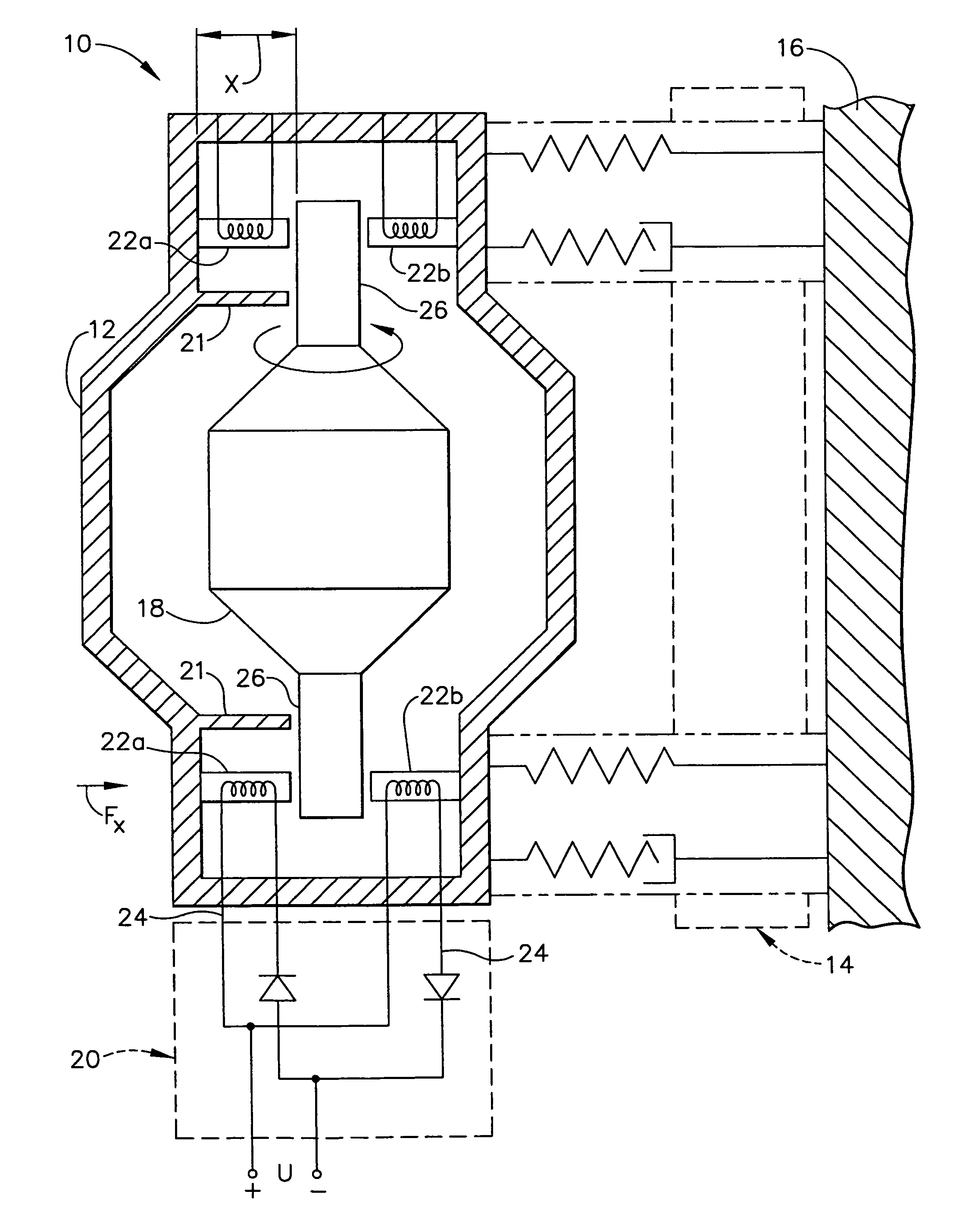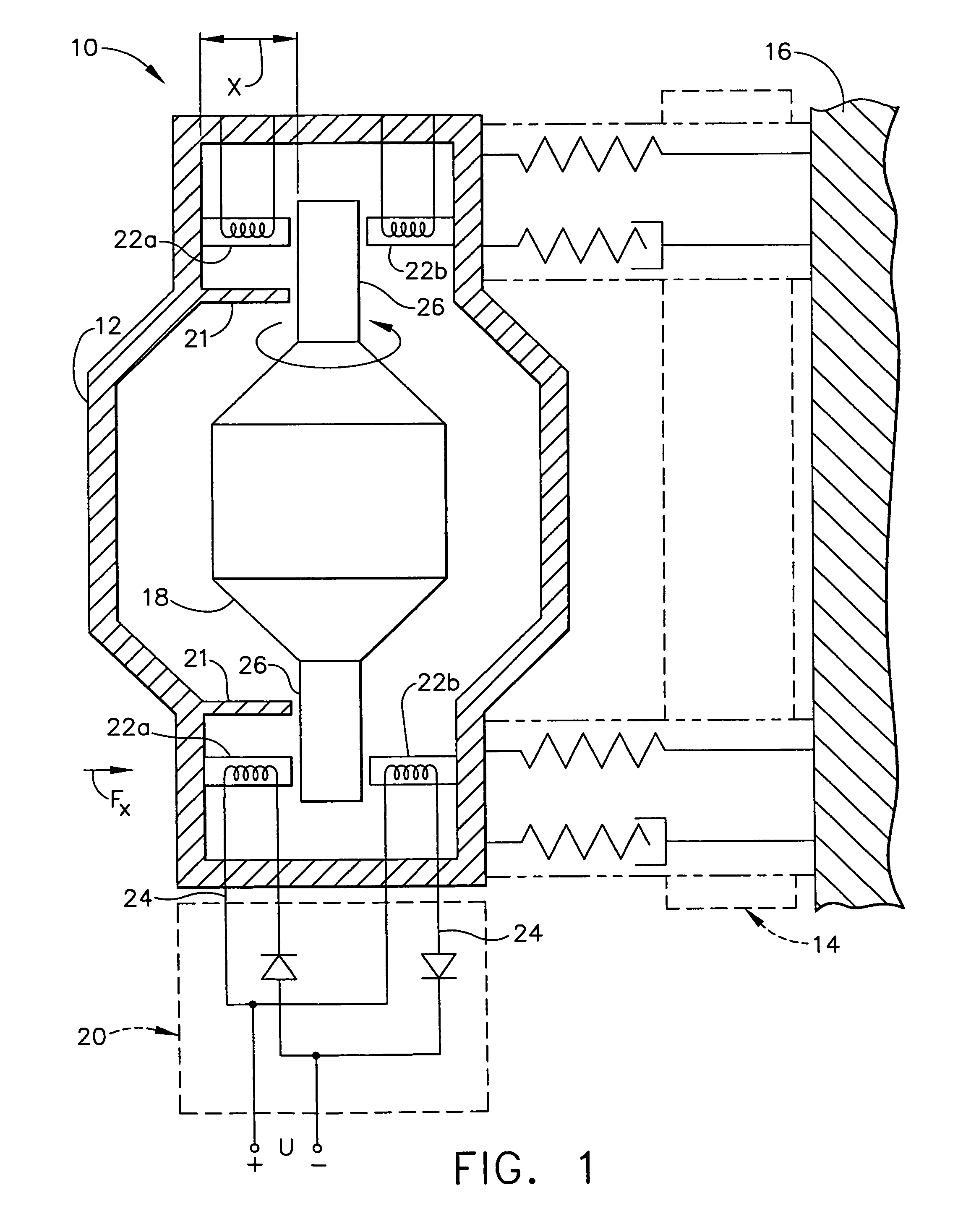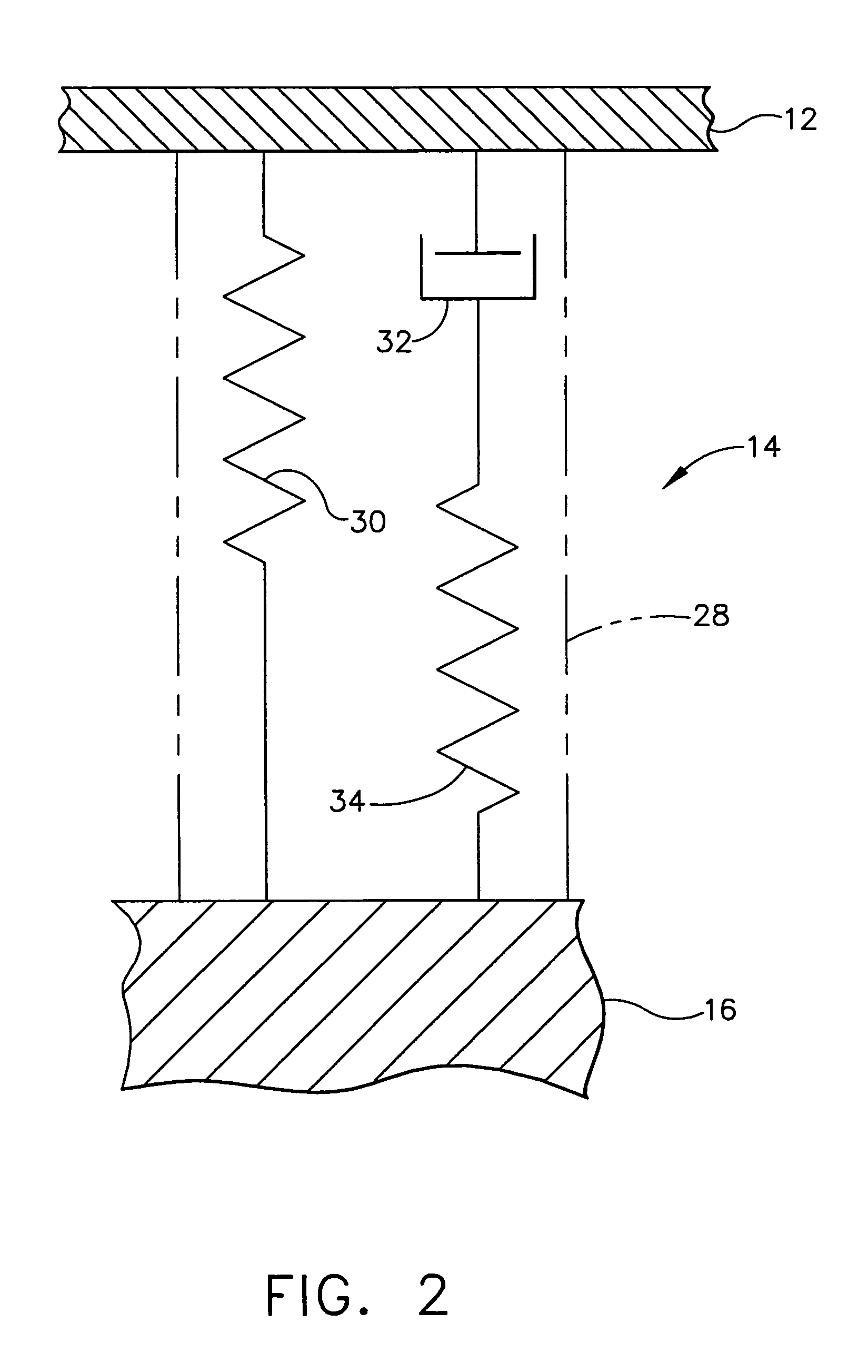Method and system for decoupling structural modes to provide consistent control system performance
a technology of structural modes and control systems, applied in the direction of machine supports, shock absorbers, applications, etc., can solve the problems of instability in control systems, problems such as the actual hardware of control systems, and the dynamics of spacecraft models that rarely fully converge to the dynamics of actual spacecrafts
- Summary
- Abstract
- Description
- Claims
- Application Information
AI Technical Summary
Benefits of technology
Problems solved by technology
Method used
Image
Examples
first embodiment
[0019]Referring now to the drawings in which like numerals reference like items, FIG. 1 shows an exemplary system 10 in which the present invention is implemented. Specifically, the system 10 includes a stationary housing 12, an isolation subsystem 14 and a mounting surface such as, for example, a spacecraft surface 16. The isolation subsystem 14 mounts the stationary housing 12 to the spacecraft surface 16. The stationary housing 12 and the isolation subsystem 14 will be discussed in detail below.
[0020]The stationary housing 12 includes an active member 18 within the stationary housing 12, a control member 20 for controlling the active member 18 and at least one bearing gap sensor 21. The active member 18 may be, for example, a rotor 18 that is magnetically levitated to a predetermined position within the stationary housing 12. The control member 20 may be, for example, an actuator 20 that controls a set of electromagnets 22a, 22b. The rotor 18 is positioned a predetermined distanc...
second embodiment
[0025]Referring now to FIG. 4, the present invention will now be discussed. A plurality of stationary housings 40, each with a respective rotor 18 and a respective set of electromagnets 22, is interconnected as an array of N stationary housings40 mounted on the spacecraft surface 16 via the isolation subsystem 14. The stationary housings 40 are relatively light in weight in comparison to the rotors 18. As discussed above, the electromagnets 22 apply a control vector force by pushing or pulling on the trunnion 26. However, the electromagnets 22 also apply an opposite vector force to the stationary housing 12 while applying the control vector force to the trunnion 26. A single stationary housing 12 may not provide sufficient mass for the electromagnets 18 to push or pull against. Therefore, by interconnecting the system 10 with an array of stationary housings 40, each of the electromagnets 22 will have sufficient mass to push or pull against. The isolation subsystem 14 prevents distur...
PUM
 Login to View More
Login to View More Abstract
Description
Claims
Application Information
 Login to View More
Login to View More - R&D
- Intellectual Property
- Life Sciences
- Materials
- Tech Scout
- Unparalleled Data Quality
- Higher Quality Content
- 60% Fewer Hallucinations
Browse by: Latest US Patents, China's latest patents, Technical Efficacy Thesaurus, Application Domain, Technology Topic, Popular Technical Reports.
© 2025 PatSnap. All rights reserved.Legal|Privacy policy|Modern Slavery Act Transparency Statement|Sitemap|About US| Contact US: help@patsnap.com



